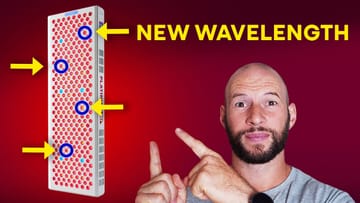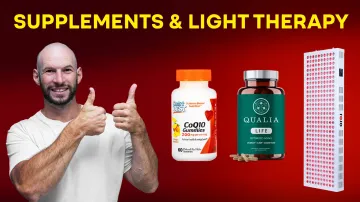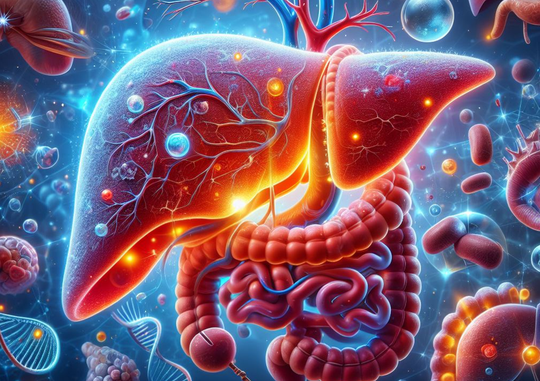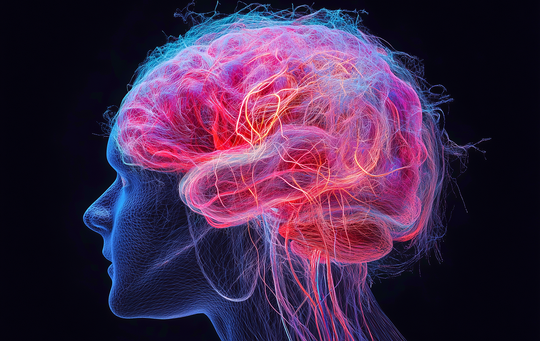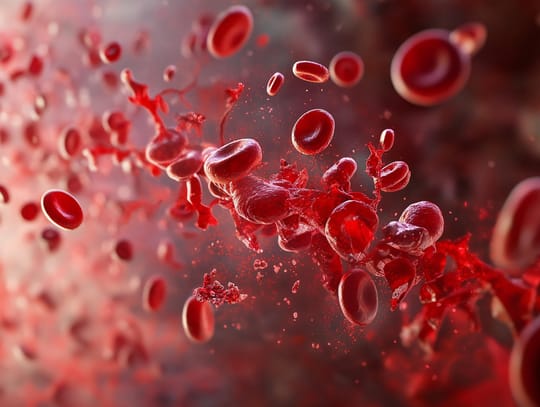Today I'll consider red light therapy for COVID. "COVID", or COVID-19 is an illness that has taken the world by storm. And no matter what your opinion about the topic, COVID-19 has changed many people's lives in the last few years.
Fortunately, there's good news! Red light therapy has helpful effects for COVID, and I'll explore that scientific evidence with you. In this blog post, I'll talk about topics such as red light therapy and COVID, red light therapy for long COVID, how to use red light therapy for lungs and COVID, and any red light therapy studies on this topic.
But first, the basics:
Quite a few studies use red light therapy for COVID, but these are usually in hospital settings with specialized equipment, such as lasers. Generally, the results of COVID red light therapy are very positive, as the light can inhibit the so-called "cytokine storm" where the immune system becomes overactive.
For the best results, you'll probably need to combine red light therapy with other lifestyle interventions, such as proper sleep, sufficient movement, sunlight exposure (for vitamin D among others), losing excess body fat, and more.
Red light therapy treatment should be very conservative and under medical supervision if you've got COVID. If I had COVID right, I'd start by putting a smaller red light therapy panel on my chest and upper back, for maybe a minute per location at first, while monitoring effects.
What’s COVID-19?
COVID-19 is caused by a virus called SARS-CoV-2. The virus emerged late 2019 in China. Since then, tons of science has been published on the topic. I'll consider reviews (which aggregate and analyze earlier research) on the COVID-19 pathology (1; 2; 3; 4; 5; 6).
The SARS-CoV-2 evolved over time, with new variants popping up. The virus started evolved into alpha variant at first, and the pandemic caused by SARS-CoV-2 mostly ended with the omicron variant (1). A recent review summarized the effects of the health condition as follows:
"Infected subjects that can mount an appropriate host immune response can quickly inhibit the spread of infection into the lower respiratory system and the disease may remain asymptomatic or a mild infection. The inability to mount a strong initial response can allow the virus to replicate unchecked and manifest as severe acute pneumonia or prolonged disease that may manifest as systemic disease manifested as viremia, excessive inflammation, multiple organ failure, and secondary bacterial infection among others, leading to delayed recovery, hospitalization, and even life-threatening consequences." (3)
For most people though, especially if you're younger, the health condition is mild (4). The SARS-CoV-2 virus mainly travels through the air, which non-infected people breathe and then become infected (6). There are many different risk factors you can control, however, such as good cardiorespiratory health, eating a healthy diet, avoiding being overweight and obese, and more (7; 8; 9).
How Long / Post-COVID Affects People?
Some people develop long COVID after a SARS-CoV-2 infection (10; 11; 12; 13; 14). The definition of long COVID is still evolving (10). Long COVID is characterized by problems thinking, heart and blood vessel issues, a harder time breathing, fatigue, pain, and more (11). Many organ systems in the body are affected in long COVID (13). Some people still have symptoms of long COVID years after the initial infection (14).
If you're overweight, smoke, are older and of female sex, your risk of long COVID goes up (11). Nevertheless, not all is doom and gloom, as red light therapy seems to be a big potential help in many cases:
How Red Light Therapy Helps with COVID Recovery
There's been a ton of published science on red light therapy for COVID. I estimate about 15 reviews, and 20 studies published on humans (12). I'll mainly go through the reviews that have been published since 2021 - later in the pandemic when more was known about the course of the illness (13; 14; 15; 16; 17; 18; 19). One of the reviews writes:
"This review revealed that [red light therapy] has been successfully applied as adjunct therapy, in combination with conventional medical treatment, and as a pioneering action in SARS-CoV-2 infection, demonstrating significant improvements in airway inflammation and general clinical condition of patients, a faster recovery, avoiding intensive care unit (ICU) hospitalization, mechanical ventilation, mortality, and overcoming long-term sequelae." (13)
Interestingly enough, one review single out the 1,068 nm wavelength specifically for countering inflammation, helps protect cells, aids blood flow and helps regulate the "heat shock proteins" (14). Heat shock proteins are activated with cold and heat exposure.
However, red light therapy for COVID isn't always easy to replicate as some studies use the intravascular method (15). And, more research is needed because many of the studies are of lower quality (15).
Also, many different human studies use different types of red light therapy applications for COVID (16). Some use a laser watch or laser acupuncture, others use red light therapy and static magnetic therapy on the respiratory muscles of the chest. So it's far from easy to develop a protocol here.
For ordinary consumers with long COVID, however, given the studies, I'd probably recommend using red light therapy directly on the skin, on the pectoral muscles and upper back, closest to the lungs. It's probably best to use the skin contact method for a short period for this goal.
For acute COVID, I recommend getting medical help first. None of what I'm saying here is medical advice. If I had COVID myself, I'd still treat myself with a low dose of red light therapy at the chest and upper back, for a short period of time.
In clinical studies, however, many different setups have been used (18). Transcranial devices (on your head) and intranasal devices (light up your nose), are used, for instance - even with the addition of ultraviolet light (18). There's even a sublingual applicator that goes under the tongue. And some of the studies use photodynamic therapy, where you ingest a substance that's affected strongly by light (18).
And, fortunately, red light therapy doesn't just work for acute COVID but also prevents problems from happening. For instance, blood vessel health (endothelial quality) improves with red light therapy (19).
Red Light Therapy And Inflammation
Inflammation is one of the main mechanisms by which red light therapy can be a game-changer for COVID. With COVID, there's often a so-called "cytokine storm" - where the immune system goes haywire (20; 21; 22; 23).
Red light therapy, in the previous studies I cited, can counter that cytokine storm. Thereby, the risk of excess inflammation and an overactive immune system goes down.
The endothelial function of blood vessels that I mentioned also decreases (21). Red light therapy is thus (partially) protective against that effect.
Lots of animal studies also exist on red light therapy for inflammation, specifically tied to COVID (24; 25). Lung damage may be averted or prevented through that mechanism.
Research vs. Anecdotal Reality
So, the problem here is that many of the studies use red light therapy for COVID in cases where patients are already really sick. So, people who are generally healthy or those who have just gotten some early symptoms of COVID, aren't included in the studies.
Nevertheless, ideally, you'll want to use red light therapy even in the early stages before you can get sick. Of course, my viewpoint here is speculative because we don't have any science to support it.
If you've got a red light therapy panel, I'd apply that to the chest and upper back, where the lungs are, for 1-2 minutes per location, directly on the skin for maximum penetration. If you're in poor health, go slow, and start with 30 seconds, and wait until the next day to monitor the reaction.
If you want affordable options, check the comparisons that Alex Fergus has created below - a tabletop panel is more than sufficient to treat your upper body:
Or, you may want a full-body panel that offers more value:
5 Extra Tips to Boost Recovery
Don't just focus on red light therapy to counter COVID. Instead, here are a few strategies that help you deal with the condition:
- Being overweight or obese massively increases the risk of hospitalization or death from COVID-19 (26; 27; 28; 29). Of course, you can't lose weight overnight, but if you've got excess body fat it's one of the main methods you can avoid getting sick from COVID.
- Improving heart, blood vessel and lung health - with a higher VO2 max your risk of COVID goes down (30; 31). Once again, you can't change this overnight but it's still an important tool to lower risk over time.
- Vitamin D deficiency increases COVID risk big time - and you can change this factor overnight by taking 5,000 IU per day from a supplement (32; 33; 34; 35; 36). Overall though, vitamin D created through sunlight exposure is best because sunlight has many other health benefits, but absent that option, vitamin D supplements can be a game-changer if you're deficient.
- Sunlight exposure very likely counters COVID-19 (37; 38). Sunlight can also decontaminate surfaces and the air, making transfer of the virus from person to person less likely. If you need help with creating vitamin D through the skin though, check this interview on an UVB lamp.
- Eat a healthy diet. With nutritional deficiencies, your immune system simply won't work the way it should.
Frequently Asked Questions
Here are a few questions related to does red light therapy help COVID:
Does Red Light Therapy Treat COVID-19?
I wouldn't say that red light therapy "treats" COVID-19, but it's a supportive tool that can have great outcomes. Always talk to a doctor if you've got COVID-19 and never rely on just red light therapy as treatment!
Can You Use Red Light Therapy When Having Symptoms?
Yes, in fact, in all of the studies, red light therapy is used to counter symptoms in the first place.
Does Red Light Kill Any Virus or Bacteria?
Red light therapy doesn't kill any viruses or bacteria directly, but does support your body's energy production and helps lower inflammation, which makes it easier for your own body to counter viruses or bacteria. In many other studies that I've not discussed in this blog post, red light therapy counters viruses across the board - even in simple stuff like a cold sore on your lips!
When to Expect Results?
You should get at least minimal results after a few treatments. If you don't get results, I recommend mixing things up, such as a lower or higher dose, or different treatment time.
Does Red Light Therapy Kill COVID?
Red light therapy doesn't kill SARS-CoV-2, but helps support health so that your body can deal with the virus.
This is a post by Bart Wolbers. Bart finished degrees in Physical Therapy (B), Philosophy (BA and MA), Philosophy of Science and Technology (MS - with distinction), and Clinical Health Science (MS), has had training in functional medicine, and is currently chief science writer at Lighttherapyinsiders.com
Found This Interesting? Then You Might Like:
- Red Light Therapy Wavelengths Benefits: The Ultimate Guide
- 36 Powerful Red Light Therapy Benefits
- The Impact Of Red Light Therapy On The Lymphatic System
- Red Light Vs Blue Light Therapy: Benefits And Differences
- 18 Science-Backed Systemic Effects Of Red Light Therapy


